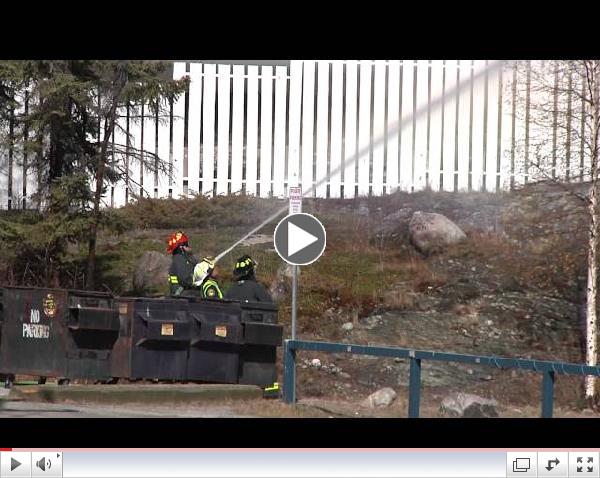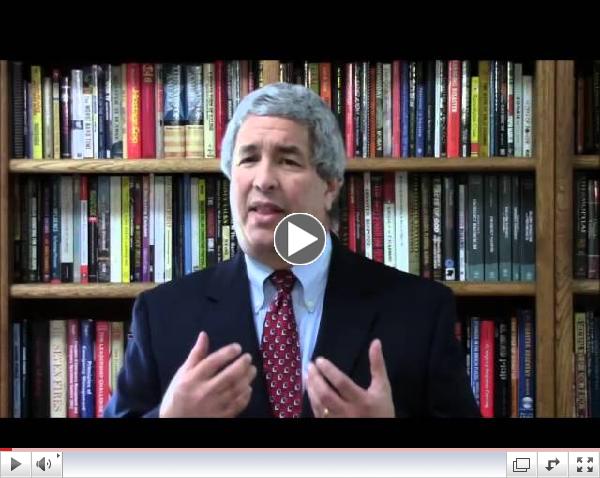|
Monthly Video
 | | 1 Introduction |
This is the introduction to a series of videos prepared for the the Northwest Territories in Canada. The series is well done and is interesting because it shows how emergency management concepts can be applied to small, remote communities.
|
Blog Highlights
The following are excerpts from my blog
Canton on Emergency Management. Please visit my blog to see the rest of my articles.
|
|
Leadership Coaching
By special arrangement with Sonoma Leadership Systems, I now offer the renowned Leadership Challenge® program on an individual basis designed exclusively for emergency managers
Benefits
-
Gain a better understanding of your leadership strengths and weaknesses.
-
Clarify your fundamental values and beliefs
-
Identify areas for immediate and long term improvement
-
Create a Personal Development Plan with measurable and achievable goals
What You Get
- A personal assessment of your leadership practices using the Leadership Practices Inventory®
- An individual 1-hour telephone counseling session with me to review your LPI® results
- A copy of Kouzes and Posner's The Leadership Challenge
____________________
Special Offer!
Leadership Coaching at 25% savings
And as a thank you for being a reader of Emergency Management Solutions, I am offering you a 25% discount on my coaching programs for a limited time. Just click on the Leadership Challenge link below to get started:
|
 | | My Website |
Follow Me
 | |
Newsletter Archive
|
|
|

Welcome to the March issue of Emergency Management Solutions.
This week was the 103rd anniversary of the devastating Triangle Shirtwaist Factory fire in New York. The fire killed 146 people, most of whom were young women, and sparked such outrage that the State of New York passed landmark legislation that forms the basis for many of the industrial hygiene and fire safety practices used today. Since these types of battles are still being waged both here and abroad, I thought it might be worth recalling the tragedy that led to so much reform.
It's not too late to take advantage of your reader's discount on my new leadership coaching practices. This is a system that I truly believe will help you perform better in your job, so check it out and feel free to write or call with your questions.
Regards,
|
|
_________________________________________________
Featured Article
The Triangle Shirtwaist Factory Fire
An historical case study
|
The Triangle Shirtwaist Factory Fire of March 25, 1911 is largely forgotten now but it is a significant focusing event in the history of industrial safety in the United States. The fire itself was horrible, claiming the lives of 146 workers, mainly immigrant women, making it the fourth highest loss of life in an industrial accident in US history. What occurred after the fire, however, created major changes that still affect us today.
Background
The Triangle Shirtwaist Factory in 1911 was one of New York's largest garment manufacturers. The company employed some 500 workers in the manufacture of women's shirtwaist blouses. The majority of the workers were women, mainly Italian and Jewish immigrants.
The work was grueling and the pay low. Employees worked nine hours a day during the week and seven hours on Saturday for the modern equivalent of $3.20 to $5.50 an hour.
The owners of the factory, known as the "shirtwaist kings" were extremely anti-union and were not interested in improving working conditions. They...
| |
CLICK HERE TO READ THE REST OF THIS ARTICLE
_______________________________
If you are having trouble viewing my featured article, try clicking on the link at the top of the page. You can always find my articles in the white paper section of my blog site, Canton on Emergency Management.
|
Professional Development
, a program started in 2001 that consists of seven independent courses
on emergency management fundamentals:
IS-120.a An Introduction to Exercises
IS-230.d Fundamentals of Emergency Management
IS-235.b Emergency Planning
IS-240.aLeadership & Influence
IS-241.a Decision Making and Problem Solving
IS-242.a Effective Communication
IS-244.b Developing and Managing Volunteers
The Professional Development System has been a mainstay for many years. Several states require it for certification and it is part of the coursework for several academic programs.
Not so well known, however is FEMA's Advanced Professional Series that was established around the same time and recently revised. Unlike the PDS, the APS requires classroom attendance at courses given through your state agency. There are five core courses that are required:
G775 - EOC Management and Operations, or IS775 EOC Management and Operations
G191 - Incident Command System/Emergency Operations Center Interface, orE947 EOC/IMT InterfaceorE/L449 ICS Train the Trainer
G557 (G250.7) - Rapid Assessment Workshop,
G270.4 - Recovery from Disaster, the Local Government Role,orE210 Recovery from Disaster, the Local Government Role
G393 or G318- Mitigation for Emergency Managers or Local Mitigation Planning,
In addition to the five required courses, the candidate must also complete five elective courses from a list of fifteen and request a certificate of completion.
|
|
|
What's your tolerance for risk? It's seems an odd question for emergency managers who deal with risk regularly. But there's a big difference between the risks organizations face and personal risk.
During the anthrax scare in them months after 9/11 we responded, as did most jurisdictions, to a high volume of "white powder" calls that taxed our HazMat teams and forced us to devise new protocols to handle the high volume. A large part of our effort was aimed at calming the public and we were fairly successful. We were professionals and this was no big deal.
Until the day I got The Package. There it was, sitting in my inbox - an unexpected package. Suddenly I was getting the same butterflies the public must have been getting. But I have a fairly high tolerance for uncertainty and risk, so instead of dialing 9-1-1, I opened the damn thing. It was something I had ordered weeks before and forgotten about.
Perceived risk can be more personal and immediate than actual risk. Further, it is impossible to eliminate all risk on our lives, although government frequently tries to pretend that we can. So understand your risk tolerance and lower your stress.
|
|
From the Bookshelf

Basic Brown: My Life and Our Times
by Willie L. Brown Jr.
Willie L. Brown, Jr. arrived in San Francisco in 1951 as a young teenager from a rural, segregated town in Texas in mail order shoes and trousers. Looking only to get a good education and become a math teacher, he had no interests in politics. Yet in a remarkable career spanning over sixty years be became an acknowledged master at politics.
Elected to the State Assembly, Brown's acumen led to his election as Speaker, a post he held for 18 years and earned him the title "the Ayatollah of the Assembly." When California enacted term limits (as a direct result of Brown's retention of the Speaker's chair), he successfully ran for Mayor of San Francisco where he served for two terms.
Brown's book is not a formal autobiography, although he does share much of his remarkable story. Instead, it's primer on how government really works, providing insights on how to work within the system to make things happen. Filled with anecdotes that illustrate his points, it's the closest thing you'll get to sitting down with him over a cup of coffee.
As Director of Emergency Services, Mayor Brown was my boss for seven years. He is without doubt the most remarkable man with whom I have worked. He taught me more about leadership and about politics than a library of books.
Basic Brown shares some of those lessons and is definitely worth reading.
______________________________________________
Interested in more books on emergency management and related topics?
Check out my bookstore at:
|
|
Looking for a Speaker?
Need a speaker for your next conference? I offer keynotes, seminars and workshops.
 | | Three Reasons Why I'm the Right Speaker for Your Conference |
|
|
Speaking Engagements
May 1 Next Generation 9-1-1 Panel, Center for Digital Government,
Lansing MI
May 6 Next Generation 9-1-1 Panel, Center for Digital Government, Austin TX,
May 8 Next Generation 9-1-1 Panel, Center for Digital Government, Dallas TX
|
|
|
|
|